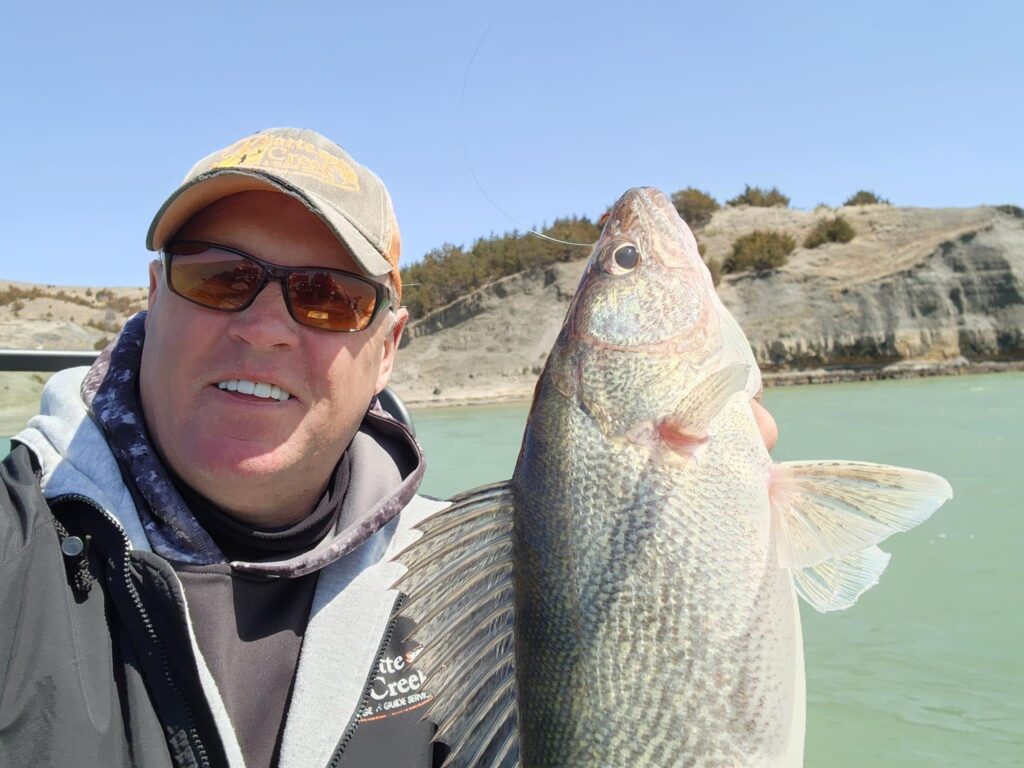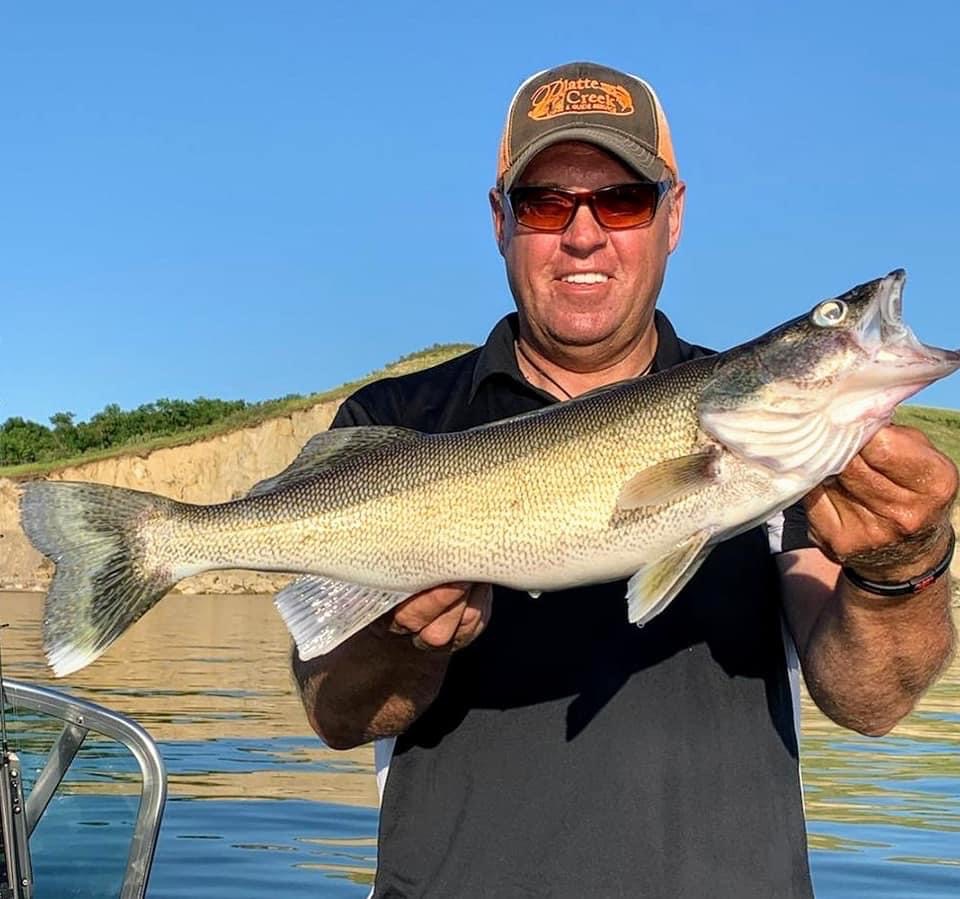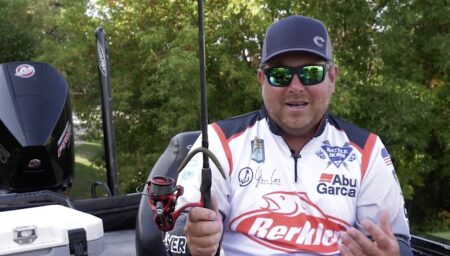
Tom Steinhauser is a full-time guide on Francis Case Reservoir located on the Missouri River in South Dakota. Tom also owns Platte Creek Lodge. Francis Case Reservoir is a long narrow reservoir with a fair amount of current. While the walleye population on Francis Case can be through the roof, what can make this reservoir a challenge to fish through the dog days of summer is the sheer amount of baitfish to compete with, mostly gizzard shad and young of the year fish hatches like white bass and drum.
“Most of the fish activity focuses near the old river channel right now,” stresses Steinhauser. The old river channel winds up and down through the reservoir and basically serves as a highway for fish to move. Baitfish and walleye can move a lot on this reservoir, so the key is to trust your electronics. “You will see clouds of baitfish all over around the old river channel right now, “explains Steinhauser. What is interesting is that some areas are just fishy in that you will see nicer marks that could be walleye, catfish, white bass, or drum…. Usually all of the above. Other species of fish besides walleye are often a good indication as many of these fish will be following the same schools of baitfish. In other words, catching a catfish or bass isn’t necessarily a bad sign. Productive depths can vary between 12 to 22 feet with an average depth right now of 16 to 18 feet.

According to Steinhauser, trolling small shad profiled crankbaits behind snap weights or lead core is a productive way to cover water, find fish and trigger strikes. Top lures include Flicker Shads, Flicker Minnows, Jointed Shad Raps, Hornets and Wally Divers. Because these fish are so well fed from an abundance of bait, the key is finding the lure of the day. Tom switches up constantly in an attempt to find the productive lure by experimenting with lures and colors. “Probably the biggest mistake is not experimenting enough and assuming you are running multiple rods, the next mistake is running all the same lure. Keep experimenting with at least a couple of rods even after you think you have the lure and color figured out because what the fish wants will change through the day.
If you are looking for more walleye tips be sure to check out our library here.
Steinhauser combines snap weights and lead core. Often running five-ounce snap weights off rod holders near the front of the boat with lighter three-ounce snap weights out the back of the boat. Using clip-on snap weights, Tom typically uses twenty-five feet of line behind the snap weight to the crank bait. Behind the snap weights, lead core is used to run some baits further behind the boat yet as the snap weights typically run closer and below the boat while the lead core takes more line and runs further back. Interestingly, there are parts of the day where every fish will come on lead core and other periods where the snap weights fire up and the lead core goes quiet.

Another adjustment is current. The current can vary in strength and change from day to day and even during the day. Average trolling speeds going against the current might range around 1.2 miles per hour whereas faster speeds of 2 to 2.3 miles per hour are needed going with the current as an average starting point. Tom likes to use his bow mount trolling motor when trolling crankbaits against and with the current so he can better judge the velocity of the current by noting how high he has to set his trolling motor to reach trolling speeds. Stronger current also requires adjustments with how much line to let out so the formula for getting crankbaits close to the bottom often has to be relearned each day.
Focus on these channel edges and cover water by trolling crankbaits. Trust your electronics and move until you find the combination of baitfish and bigger marks indicating predators. Once you start marking fish on your electronics, hustle with your trolling spread and experiment until you find the specific lure, action, and color that the fish want to eat. Because these fish have so much to eat come midsummer, finding that winning recipe can be nerve-wracking and frustrating as there is no magic formula for success. In other words, you never know when you leave the dock in the morning what lure the fish are going to decide to eat that particular day so keep an open mind and keep changing lures until you start seeing some success.



